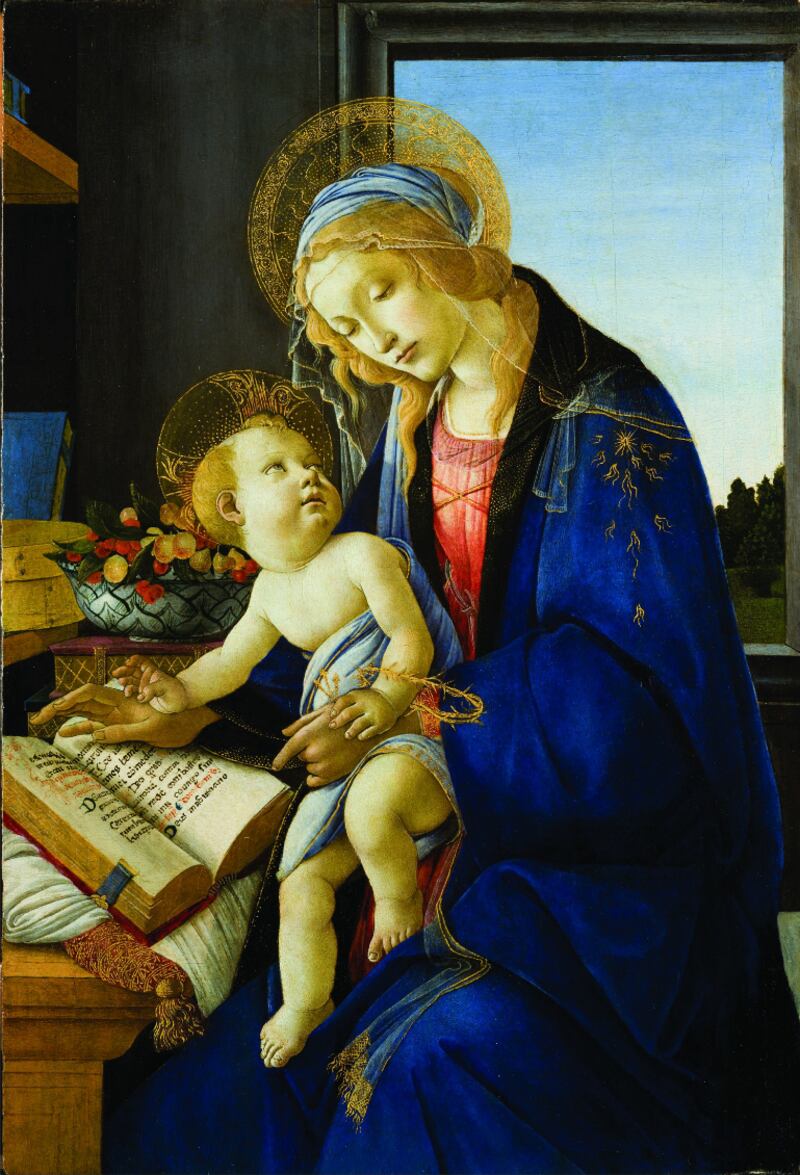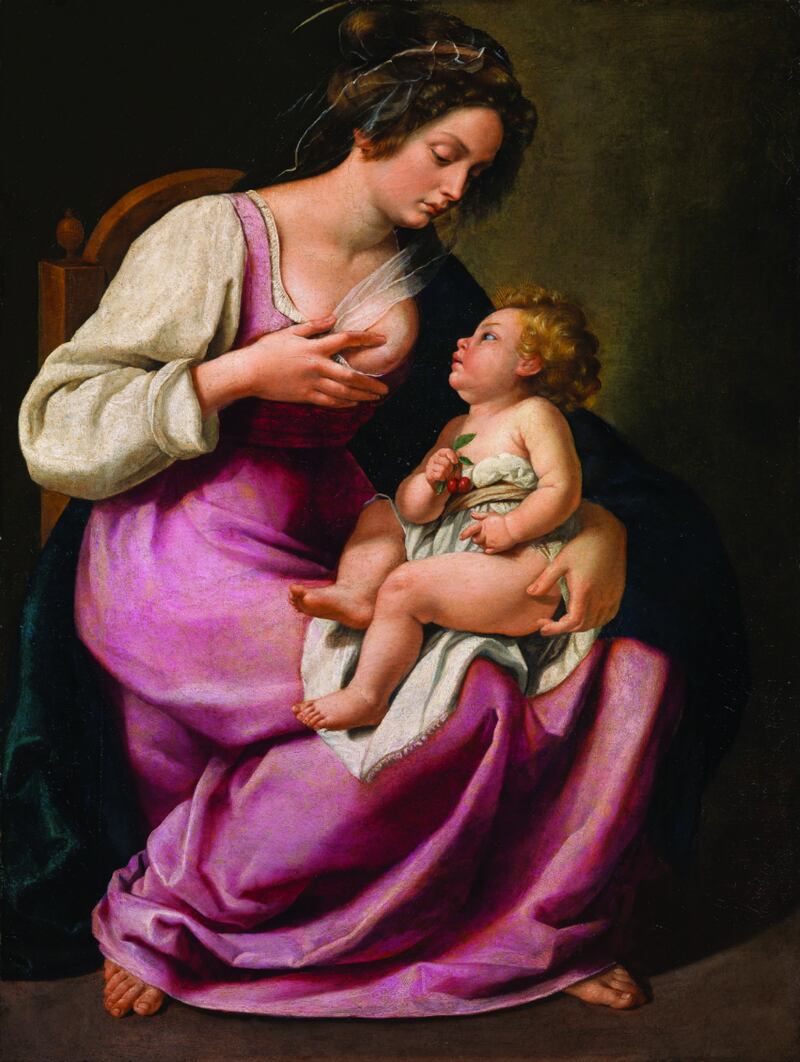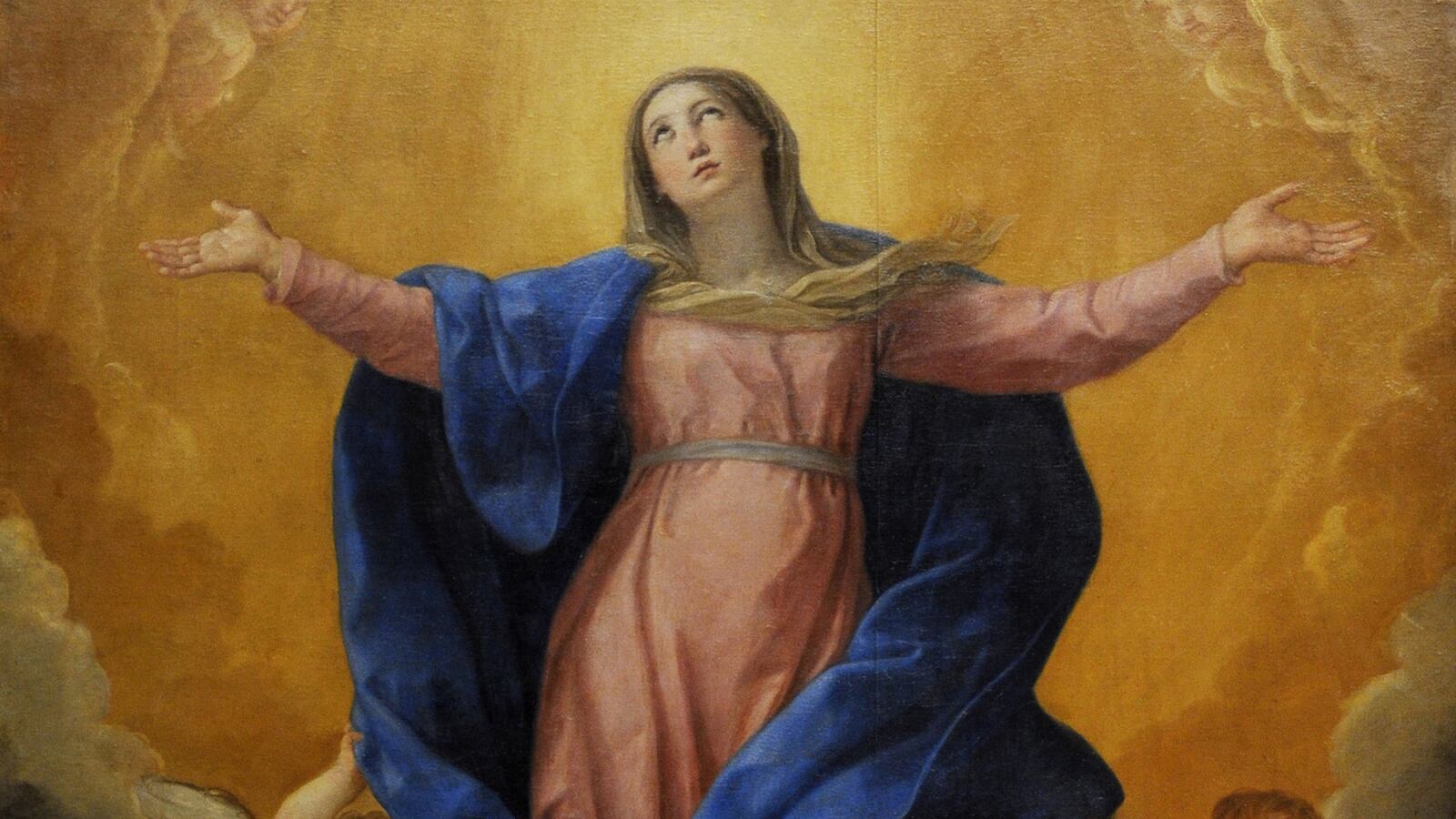Just as millions worldwide get ready to tear their way through present after present, the National Museum of Women in the Arts is reminding us what this time of year is really about with an exhibition on the Virgin Mary.
Picturing Mary: Woman, Mother, Idea, which is open through April 12, is an ambitious reminder that for millions over the past centuries, there really is something about Mary.
During the Renaissance and Baroque periods, roughly the 14th to 18th centuries, Mary was one of the most frequently depicted women in Western art, the museum contends. The exhibit explores what she meant to both the artists and the people living during this time through roughly 60 paintings, sculptures, and textiles by mostly Italian artists including Caravaggio, Botticelli, Michelangelo, Pontormo, della Robbia, and Gentileschi, that capture not only her religious relevance and her lionized status as a subject in Western art, but also her impact on a personal level.
Any institution striving to examine such an iconic figure would find formidable challenges. Yet, despite being on the smaller side, the National Museum of Women in the Arts has launched an exhibition that undoubtedly gives a visitor pause.
The exhibit is divided thematically into six sections: Mary as daughter, cousin, wife, and faithful servant to God; a protagonist in her own life story; the mother of an infant; the grieving mother; the link between earth and heaven; and a source of help for those who turn to her.
“Picturing Mary is a daring cultural adventure, trying to capture the poetry of the most durable relationship Western society has known, that between Christians and the Jewish woman who was Jesus’ mother,” exhibition curator and Marian scholar Monsignor Timothy Verdon said in a statement to The Daily Beast. “I looked for works that were important as art and that fit the categories I defined for the exhibition: Madonna and Child, Woman and Mother, Mother of the Crucified, Mary as Idea, A Singular Life, Mary in the Life of Believers, I then tried to keep the works within a somewhat cohesive cultural framework: they’re mostly Italian 14th, 15th, and 16th-17th century masterpieces.”
Beyond their ability to attract crowds, works from big names were selected, he says, “because it’s interesting to see how the great geniuses treat ‘ordinary’ themes.”
As one walks from chamber to chamber, a number of things become abundantly clear. Mary is rarely just Mary in this selection—she is almost always depicted with her newborn or dead son. She is whatever society needs her to be—mother, helper, redeemer, role model, or as in Tino De Camaino’s Madonna and Child, a throne for Christ to sit on. Our image of her is always in relation to somebody else. As a result, the exhibit falls short of showing Mary as real woman, as a protagonist in her own life story.
Some of the works are incredibly powerful—particularly in the sections focusing on Mary grieving and those that emphasize her loving relationship with her son. Often overshadowed by her son’s trials, it’s easy to forget that Mary brought into the world and raised a child who she knew would die a painful death thanks to a prophecy from Simeon recounted in the Gospel of Luke.
The stone-carved Crucifixion by the Master of Sant’Anastasia in the 14th century captures the anguish of mother and son as he dies on the cross through exaggerated grotesque forms. In Luca della Robbia’s polychrome terracotta Madonna and Child there is a palpable desperation in Mary as she clings to her infant son, well aware of what fates lie ahead.
For those with a predilection for immaculately fine and delicate paintings by Botticelli, his Madonna of the Book will satisfy. Botticelli has managed to paint one of his beautiful detailed scenes, and also capture a deep sadness in Mary’s face.

In the case of Francescuccio Ghissi’s The Dead Christ and Angels; Adoration of the Infant Jesus, little is left to the imagination regarding Mary’s state of mind. Hovering above a scene of her gazing upon her infant child in the bottom half of the painting, is an image of her son in the tomb, which is supposed to be her mental projection of his death.
On the opposite end of the spectrum are two other standout works, which depict Mary as a loving, nurturing mother. As humanism took off during the Renaissance, an emphasis on the dignity of human beings, and an interest in early childhood were reflected in art. In the case of Mary, it meant depictions of her and the infant Jesus were far more intimate, dramatic, and showed more interaction between the two.
Artemisia Gentileschi—perhaps best known for her delightfully violent Judith Slaying Holofernes—paints an incredibly tender scene in her Madonna and Child. Mary, who fills up the frame, is garbed in simple clothes, and bares her breast for the baby Jesus. She also features a more natural face than the one of docile serenity so often bestowed on the Queen of Heaven.
The second standout painting in this thematic section, which will likely be a favorite for audiences of all ages, is the Madonna and Child by the Master of the Winking Eyes. The artist depicts the pair nestled against each other, essentially giggling, and he based his portrayal on observations of mothers playing with children.

While the selection by the museum is nowhere near representative of the works depicting Mary from this era—a likely insurmountable task—what is refreshing is that it rescues some of the lesser known ones from the plethora of Marys filling museums, palaces, and churches throughout Italy. Artists like Orsola Maddalena Caccia will be unfamiliar to most, and yet she has six works in the exhibition. Visitors are also able, for instance, to devote far more time to the two pieces by della Robbia at this exhibit than they would in their permanent home at the Bargello in Florence, where they tend to get lost in the deluge of other works by the artist, as well as works from bigger names like Donatello, Michelangelo, Cellini, Ghiberti, Giambologna, Brunelleschi, and Bernini.
Federico Barocci’s Rest on the Flight into Egypt from the Vatican Museums would in all likelihood be passed by in that setting, but in this exhibition, it is given prominent placement. Of course, after giving it any significant thought, one can’t help but be struck (particularly after viewing the dramatic depictions of the grieving Mary) by how silly the painting is. Mary, Joseph, and the newborn baby Jesus are fleeing Herod to Egypt. But somehow, they’ve managed a picnic that would make Marie Antoinette proud.
The exhibition also provides useful insight into the importance of symbolism, particularly when it comes to religious painting. It does a commendable job for focusing not only the big picture ideas behind the painting, but also the little details, such as how Mary standing on a crescent moon represents the Immaculate Conception or a goldfinch stands in for the crucifixion of Jesus.
Timing is everything—and an exhibition on Mary couldn’t be better timed than during the holiday season—especially in a year that has been largely devoid of the sacrifice and selflessness that she has long represented.






